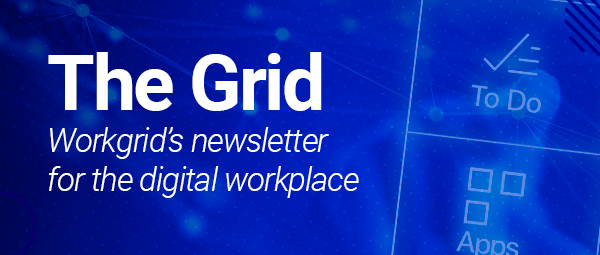In today's world of work, there's tremendous focus on employees and their experience in the digital workplace. The Gartner® report, "Take These 3 Actions to Make Digital Workplaces Happier, Faster and Smarter," is the perfect example of this. The report details three key recommendations for making digital workplaces happier, faster, and smarter:
Supporting radical flexibility for more employee satisfaction
Helping employees work faster, despite distractions
Aspiring to work smarter
![[asset] Gartner Happier, Faster, Smarter Graphic](https://images.ctfassets.net/z7p73u8c0thn/2VBF7hk53BInagEWb01thT/8f1d37d4de715ebd6c62d7b83f5f421c/A-journey-showing-people-as-the-center-of-a-transformation-to-make-work-happier_-faster-and-smarter-target.png?w=1200&h=675&q=60&fm=png&bg=transparent)
The nature of work has changed dramatically in recent years, prompting organizations to rethink what employees need to be successful. (Source: Take These 3 Actions to Make Digital Workplaces Happier, Faster and Smarter)
Each of Gartner’s recommendations is a critical step in enacting long-term digital transformation, but let’s take a closer look at the first action they suggest, supporting radical flexibility…
Enabling radical flexibility in the digital workplace
With the sudden shift to remote work due to the pandemic, as well as the growing prevalence of the hybrid working model, there's no question that flexibility is a must-have for employee - and business - success. It would be impossible to establish effective new working practices if organizations continue to cling to rigid, old-school methods of work.
Gartner suggests that organizations can achieve radical levels of flexibility with a few simple approaches:
“strive for persistent collaboration”
“provide optimized service”
“start locally”
These are valid approaches, but what are some other actions organizations should consider?
Deliver important tasks and information in the flow of work
Employees all have different approaches when it comes to how they like to work. Some spend the day immersed in communication and collaborations platforms like Slack and Teams. Others prefer the intranet as a starting point for their work, while others may prefer mobile.
Organizations can optimize the productivity of every type of employee by giving them the flexibility to work in the channel that's most convenient for them. Using an experience layer makes that possible by abstracting the important tasks and information employees need from enterprise systems and presenting it in the channels they spend the most time in.
![[asset] Microsoft Teams Integration](https://images.ctfassets.net/z7p73u8c0thn/5tKkB9PquveFKvtlfsjGb6/9d5fa9cea8078490b6e063bbb5873438/MS_Teams_Updated_1221_3.png?w=1200&h=669&q=60&fm=png&bg=transparent)
Build custom digital experiences when the need arises
With the current shortage of experienced developers it can be hard for organizations to embrace innovation and build the custom experiences employees need at the pace they’re required. Taking advantage of no code development is an easy way to bridge this gap.
By giving non-technical business leaders the ability to quickly and easily build their own applications using a drag and drop interface, organizations can deliver the right experiences to the right people at the right time, improving both business processes and the employee experience.
![[asset] Workshop-No-Code-App-Builder](https://images.ctfassets.net/z7p73u8c0thn/TjT0hJwPwR8LbDsvcLhE2/cc1df4f1ee00086a8ed2378bb4f9d755/Workshop_blog_2.png?w=750&h=268&q=60&fm=png&bg=transparent)
Mobile access to core enterprise applications from a central location
As hybrid becomes the prevalent work model, it will be critical for organizations to help employees work wherever and whenever it’s convenient. This doesn’t just mean ensuring that enterprise applications have a mobile component, however. Many already do but having to log into multiple applications to get work done is a significant source of digital friction for employees.
An employee communication app (ECA) can eliminate this pain point. By integrating with back-end systems for HR, IT, and Finance, employee communication apps streamline access to key enterprise systems, abstracting the most important tasks, notifications, and information employees need (think time-sensitive alerts, approvals, and corporate communications). ECAs then display that information in a single experience that every employee can access, no matter where they are.
![[gif] workgrid approvals](http://images.ctfassets.net/z7p73u8c0thn/2P2BdYKMYnOqhxxFDsRbnG/90dd8260ff791a6a001f8937b078ab76/workgrid-approvals.gif)




